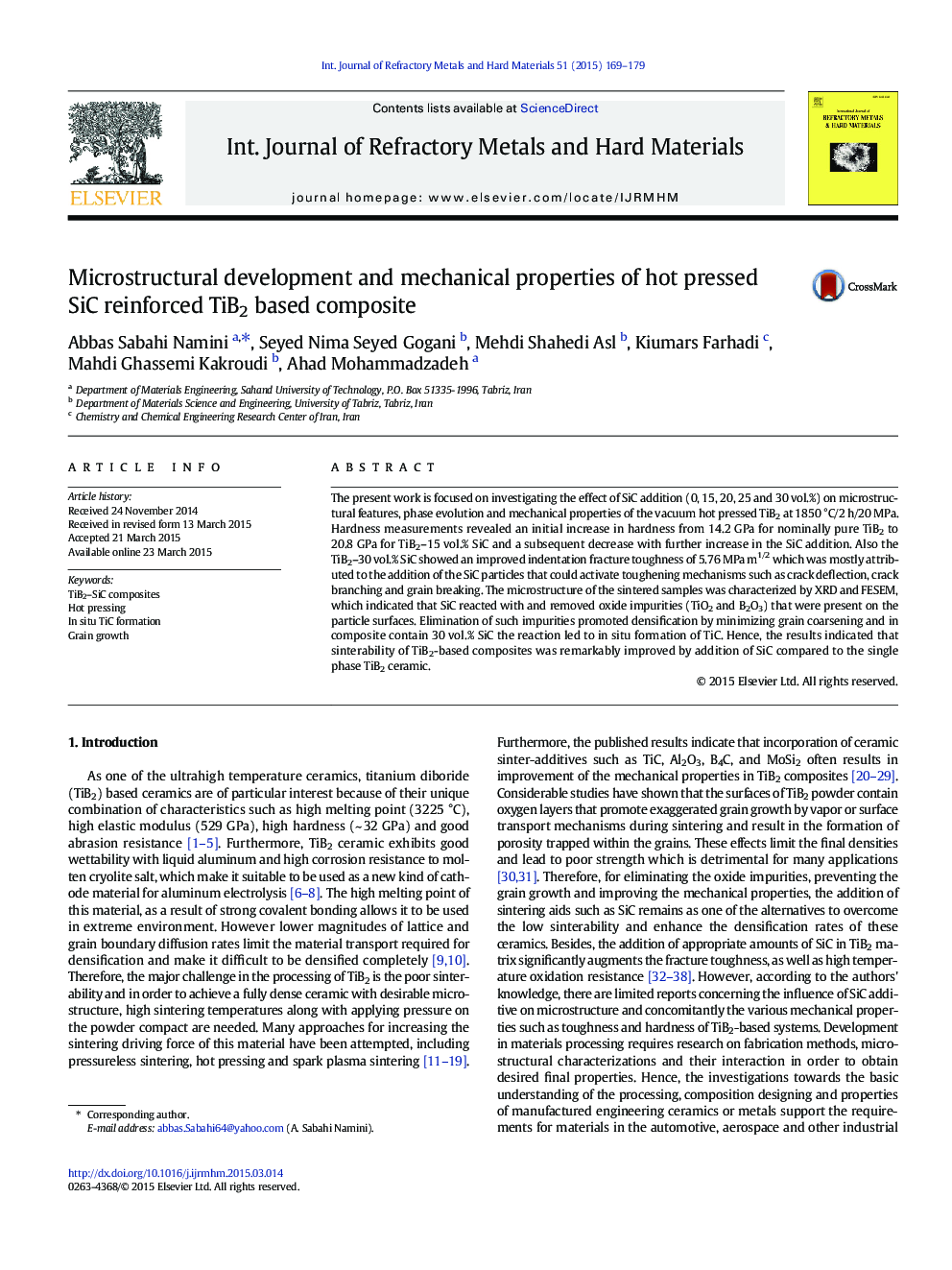| Article ID | Journal | Published Year | Pages | File Type |
|---|---|---|---|---|
| 1602951 | International Journal of Refractory Metals and Hard Materials | 2015 | 11 Pages |
•The relative density of TiB2 based ceramic was increased by introducing SiC particles.•Removing oxide impurities promoted densification by minimizing grain coarsening.•In higher SiC content, the reaction between TiB2 and SiC led to in situ TiC formation.•SiC addition led to higher fracture energy dissipation during the crack propagation.
The present work is focused on investigating the effect of SiC addition (0, 15, 20, 25 and 30 vol.%) on microstructural features, phase evolution and mechanical properties of the vacuum hot pressed TiB2 at 1850 °C/2 h/20 MPa. Hardness measurements revealed an initial increase in hardness from 14.2 GPa for nominally pure TiB2 to 20.8 GPa for TiB2–15 vol.% SiC and a subsequent decrease with further increase in the SiC addition. Also the TiB2–30 vol.% SiC showed an improved indentation fracture toughness of 5.76 MPa m1/2 which was mostly attributed to the addition of the SiC particles that could activate toughening mechanisms such as crack deflection, crack branching and grain breaking. The microstructure of the sintered samples was characterized by XRD and FESEM, which indicated that SiC reacted with and removed oxide impurities (TiO2 and B2O3) that were present on the particle surfaces. Elimination of such impurities promoted densification by minimizing grain coarsening and in composite contain 30 vol.% SiC the reaction led to in situ formation of TiC. Hence, the results indicated that sinterability of TiB2-based composites was remarkably improved by addition of SiC compared to the single phase TiB2 ceramic.
